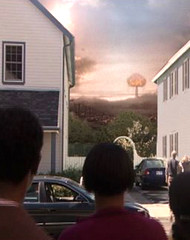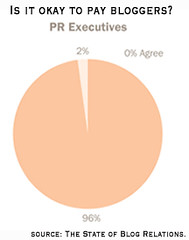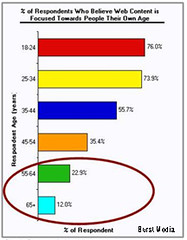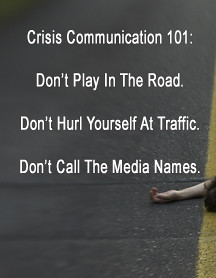“Marketing is too important to be left to the marketing department,” once said David Packard, Hewlett-Packard, who worked hard to combine research and development with marketing, with the knowledge that marketing does not end with the marketing department.
The concept, in part, was tied to an understanding of how marketing can help differentiate products in the marketplace. Specifically, when two companies enter a similar niche, message differentiation can mean the difference between winning and losing. Considering HP was founded with an initial investment of $538 in a garage and later became the first IT company to exceed $104 billion in sales two years ago, there might be something to that.
Two job sites take aim at the $100k+ job niche.
Today, in the recruiting industry, there are two companies attempting to differentiate themselves from other job search sites, but within the same niche: TheLadders and RiseSmart. Each is hoping to dominate a subscription-based job site niche that focuses on jobs starting at $100k.
Based upon marketing messages, they seem to be operating from different sides of the same equation. Don’t let their similar identities fool you. Their communication suggests one is pursuing qualified employers whereas the other is pursuing qualified candidates in a race toward the middle.
Currently, TheLadders benefits from better brand recognition after launching a national ad campaign. The campaign features a championship tennis match in which madness ensues when everyone in the stands attempts to join the game. While clever, the campaign seems to target employers despite being “representative of the challenges job seekers face on other sites.” The distinction is more apparent in print, with one headline saying “Quick, Find The Most Talented Player.”
RiseSmart, which recently called TheLadders campaign elitist, is looking to cater to candidates by offering what they call a “RiseSmart Concierge” program that adds a human presence. The idea is to have someone help the candidate further narrow the job search beyond the algorithm.
The human assist comes at a price. RiseSmart currently offers its services for $54.95 per month (or $43.95 with a new member discount; $109.95 for three months). TheLadders is offering candidates a subscription-based service for $30 per month (or $180 per year). The Ladders also has a free “limited access” to job listings feature, enticing employers with 2 million members. RiseSmart aggregates several other listing sites, enticing candidates with 1 million jobs. So who will win? First one to middle court.
Some other voices taking note of the $100K+ niche market:
• The Recruiting Fly
• SpringWise
• Forbes

The concept, in part, was tied to an understanding of how marketing can help differentiate products in the marketplace. Specifically, when two companies enter a similar niche, message differentiation can mean the difference between winning and losing. Considering HP was founded with an initial investment of $538 in a garage and later became the first IT company to exceed $104 billion in sales two years ago, there might be something to that.
Two job sites take aim at the $100k+ job niche.
Today, in the recruiting industry, there are two companies attempting to differentiate themselves from other job search sites, but within the same niche: TheLadders and RiseSmart. Each is hoping to dominate a subscription-based job site niche that focuses on jobs starting at $100k.
Based upon marketing messages, they seem to be operating from different sides of the same equation. Don’t let their similar identities fool you. Their communication suggests one is pursuing qualified employers whereas the other is pursuing qualified candidates in a race toward the middle.
Currently, TheLadders benefits from better brand recognition after launching a national ad campaign. The campaign features a championship tennis match in which madness ensues when everyone in the stands attempts to join the game. While clever, the campaign seems to target employers despite being “representative of the challenges job seekers face on other sites.” The distinction is more apparent in print, with one headline saying “Quick, Find The Most Talented Player.”
RiseSmart, which recently called TheLadders campaign elitist, is looking to cater to candidates by offering what they call a “RiseSmart Concierge” program that adds a human presence. The idea is to have someone help the candidate further narrow the job search beyond the algorithm.
The human assist comes at a price. RiseSmart currently offers its services for $54.95 per month (or $43.95 with a new member discount; $109.95 for three months). TheLadders is offering candidates a subscription-based service for $30 per month (or $180 per year). The Ladders also has a free “limited access” to job listings feature, enticing employers with 2 million members. RiseSmart aggregates several other listing sites, enticing candidates with 1 million jobs. So who will win? First one to middle court.
Some other voices taking note of the $100K+ niche market:
• The Recruiting Fly
• SpringWise
• Forbes




































